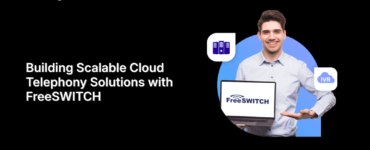Voice over Internet Protocol (VoIP) has transformed the way businesses and individuals communicate. With features like low-cost calling, scalability, and integration into unified communications platforms, VoIP is now a standard in modern telephony. However, as voice traffic moves across the internet, it becomes vulnerable to eavesdropping, call interception, and data breaches. Understanding how to secure VoIP calls with SIP encryption is essential for protecting sensitive conversations and maintaining trust. One of the most effective ways to safeguard these communications is by implementing SIP encryption across your VoIP infrastructure.
Understanding how to secure VoIP calls with SIP encryption is essential for maintaining privacy, ensuring compliance, and building trust in digital conversations. This guide walks through the fundamentals of SIP encryption, its importance, and practical steps to implement it effectively.
What Is SIP and Why Encryption Matters
You know that Voice over Internet Protocol (VoIP) is how we connect these days, right? It’s the engine behind your team’s calls and video chats, making communication cheaper and more flexible. But here’s the thing: while SIP (Session Initiation Protocol) expertly sets up and tears down those calls, it doesn’t automatically put a lock on your conversations. Think of it like a switchboard operator who connects your calls but doesn’t listen in to ensure privacy.
That’s where the risk comes in. Without the right protection, your SIP-based calls are like open books. Anyone with the right tools could potentially snoop on sensitive information—your caller ID, how long you talk, even who you’re calling and from where. And if your actual voice and video streams (RTP) aren’t also secured, that’s fair game for eavesdroppers.
We’re talking about real dangers here: imagine corporate secrets spilling, identities being stolen, or even fraudulent activities happening right under your nose.
That’s why encryption is a game-changer. It scrambles your data into an unreadable mess, ensuring that only the people it’s meant for can decrypt and understand it. Implementing SIP encryption isn’t just a techy tweak; it’s a vital move to safeguard your organization’s entire communication system. It’s about protecting privacy, maintaining trust, and keeping your digital conversations secure.
Types of SIP Encryption
To understand how to secure VoIP calls with SIP encryption, it’s important to know the two primary layers where encryption is applied:
1. SIP Signaling Encryption (TLS)
Transport Layer Security (TLS) encrypts the SIP signaling messages exchanged between user agents (phones, softphones) and SIP servers. This prevents attackers from intercepting call setup data, such as who is calling whom and when.
- Ensures confidentiality of call metadata
- Protects against SIP trunk hijacking and toll fraud
- Uses digital certificates for endpoint authentication
2. Media Encryption (SRTP)
Secure Real-time Transport Protocol (SRTP) encrypts the actual voice or video payload transmitted during a call. Without SRTP, even if signaling is encrypted, the conversation content remains exposed.
- Encrypts voice packets between endpoints
- Prevents eavesdropping on call content
- Works in tandem with Secure RTP (SRTCP) for control data
Together, TLS for signaling and SRTP for media form the foundation of secure SIP communications—often referred to as SIPS (Secure SIP) or encrypted SIP trunking.
Step-by-Step: How to Secure VoIP Calls with SIP Encryption
1. Pick a Provider That Takes Security Seriously
First things first, your VoIP service provider needs to be on board with encryption. Don’t just assume they offer it! When you’re shopping around, make sure they specifically support TLS (Transport Layer Security) for signaling and SRTP (Secure Real-time Transport Protocol) for your actual voice and video. Bonus points if they offer mutual TLS (mTLS) for even stronger authentication. If you operate in an industry with strict rules, like healthcare or finance, ensure your chosen provider also complies with standards like HIPAA, GDPR, or PCI-DSS.
2. Turn On TLS on Your Devices
This is where you tell your IP phones, softphones, and PBX (Private Branch Exchange) systems to use TLS for setting up calls. It’s usually a straightforward setting:
- Change the SIP transport protocol to TLS (you’ll often see port 5061 as the standard).
- Install trusted SSL/TLS certificates on your SIP server – these are like digital IDs that confirm who’s who.
- Make sure your system validates these certificates to stop sneaky “man-in-the-middle” attacks.
Good news: most business-grade VoIP systems, like Asterisk, 3CX, or Cisco Unified Communications Manager, make this easy to configure right from their admin dashboards.
3. Activate SRTP for Your Conversations
While TLS secures the “setup” of your call, SRTP protects the actual audio and video. You’ll want to enable this on both ends of your communication. Many SIP clients let you set preferences like:
- Setting media encryption to “SRTP only” or “Encrypted media required.”
- Disabling support for unencrypted RTP to ensure all media is secure.
- Using secure key exchange protocols like SDES (less common in big enterprise setups is ZRTP, but it’s another option).
4. Deploy a Session Border Controller (SBC)
Think of an SBC as a highly intelligent security guard at the border of your network. It’s fantastic for centralizing and managing your SIP encryption. An SBC can:
- Enforce your encryption rules.
- “Terminate” encrypted sessions from the outside and then “re-encrypt” them for your internal network, adding an extra layer of security.
- Protect against nasty Denial-of-Service (DoS) attacks and toll fraud.
- Help with NAT traversal (solving common network address translation issues) and topology hiding (keeping your internal network structure private).
Whether you opt for an on-premise or cloud-based SBC, it’s one of the most effective ways to truly nail down your organization’s SIP security.
5. Implement Strong Authentication
Encryption is powerful, but it’s even stronger when paired with robust authentication. Make sure you’re using:
- Strong, unique passwords.
- Disabling any default user accounts immediately.
- Enabling SIP digest authentication. For top-tier security, consider IP whitelisting (only allowing connections from known IP addresses) or using certificate-based mutual authentication.
6. Regularly Check and Monitor Your Traffic
Even with all these steps, vigilance is key. Use network monitoring tools to peek at your SIP and RTP traffic. You’re looking for anything suspicious: unencrypted sessions trying to sneak through, failed TLS handshakes, or unusual call patterns. Tools like Wireshark can help you confirm that encryption is actually working, while SIEM (Security Information and Event Management) systems can alert you to potential breaches in real time.
Common Challenges and How to Overcome Them
While SIP encryption offers robust protection, you might run into a few bumps along the way:
- Older Devices: Some older SIP phones or systems might not support TLS or SRTP. The fix? Upgrade your legacy hardware, or use an SBC as a secure bridge to handle encryption for them.
- Network Headaches: Encrypted SIP sometimes clashes with NAT and firewall settings. You’ll need to work closely with your IT team to open specific ports and configure firewalls correctly, often involving STUN/TURN settings.
- Performance Concerns: “Will encryption slow things down?” It adds a tiny bit of latency, yes, but with today’s hardware, this impact is usually negligible. Just ensure your network has enough bandwidth and proper Quality of Service (QoS) policies to prioritize voice traffic.
Why Encryption Is Non-Negotiable in Unified Communications
Today, our workplaces thrive on unified communications (UC) – that seamless blend of calls, video chats, instant messages, and collaborative tools. The thing is, SIP (Session Initiation Protocol) often underpins all of it. So, if even just one of your SIP connections, like a SIP trunk, isn’t secure, it’s like leaving a back door wide open for your entire UC setup. By encrypting SIP traffic, you’re making sure that every single piece of your communication – whether your team is dialing in from the office, working remotely, or using their mobile phones – stays locked down and protected. It’s about securing your whole conversation ecosystem, no matter where it’s happening.
Final Thoughts
If you’re using VoIP, you can’t afford to ignore security. These days, phone calls travel over the internet just like emails and files, which means they can be intercepted. And with cyber threats on the rise, leaving your calls unencrypted is kind of like sending company secrets in a postcard.
The good news? Protecting your calls isn’t rocket science. One of the best ways is to use SIP encryption. That means turning on TLS for the call setup and SRTP for the actual voice part of the call. Together, they keep your conversations private from start to finish.
Pair that with a trusted VoIP provider and a Session Border Controller (SBC) — basically a security guard for your phone system — and you’ve got a solid defense.
It’s not just about avoiding hacks (though that’s important). It’s also about meeting regulations, protecting your reputation, and making sure your team can talk freely without worrying about who might be listening.
So take a quick look at your current setup. If SIP encryption isn’t turned on, it’s worth a few minutes to fix it. Small change, big peace of mind.
Frequently Asked Questions: How to Secure VoIP Calls with SIP Encryption
Understanding how to secure VoIP calls with SIP encryption is vital for protecting your business communications. Here are five common questions that clarify key aspects of SIP encryption, its implementation, and benefits.
1. What does SIP encryption do to protect my VoIP calls? SIP encryption protects both how your calls are set up (signaling) and the actual conversation (media). TLS (Transport Layer Security) secures call setup info like who’s calling and where, stopping eavesdropping. For your voice or video, SRTP (Secure Real-time Transport Protocol) encrypts the content itself, so only authorized people can hear. Together, they make it incredibly tough for anyone to snoop on your calls.
2. Can I use SIP encryption with my existing VoIP system? Yes, most modern VoIP systems support SIP encryption, but you need to configure it correctly. Check that your phones, softphones, and PBX (like Asterisk or 3CX) support TLS and SRTP. If older equipment or your provider doesn’t offer native support, a Session Border Controller (SBC) can act as a bridge to enforce encryption for everything. Always confirm compatibility first.
3. Is enabling TLS and SRTP enough to fully secure my VoIP network? While TLS and SRTP are a great start, comprehensive security requires more. Use strong authentication (like SIP digest or certificate-based logins), disable default accounts, and consider IP whitelisting. An SBC adds protection by filtering traffic and blocking attacks. Regular monitoring with tools like Wireshark or SIEM systems helps you catch anything suspicious.
4. How do I verify that my SIP calls are actually encrypted? You can check by analyzing your network traffic with tools like Wireshark. Look for SIP messages on port 5061 (TLS) instead of 5060 (unencrypted). You’ll also see that RTP streams are replaced by SRTP – appearing as unreadable, scrambled data. Many VoIP platforms also show encryption status in their dashboards or call logs.




